Photo Source: AP Photo/Ben Curtis

National Institute of Advanced Studies (NIAS)
Indian Institute of Science Campus, Bangalore
For any further information or to subscribe to GP alerts send an email to subachandran@nias.res.in
NIAS Africa Monitor
Famine in Ethiopia: The government's refusal to acknowledge, worsens the crisis
 |
Harshita Rathore
|
Steps taken by the Ethiopian government in response to the fight against the TPLF and its ongoing nature has resulted in key issues leading to famine.
The Crisis
In November 2020, Tigray, Amhara and Afar regions of Ethiopia were facing conflict and unrest. The state of war had intensified the civilian suffering, leading to a humanitarian crisis in Tigray; 350,000 are grappling with starvation. As of May 2021, the International Organization for Migration estimates that more than 1.7 million people have been displaced due to the conflict and the World Food Programme says around 5.2 million people in the three regions are in need of food aid.
The crisis originated when fighting broke out in the region in November 2020 between government troops and the region’s former ruling party, Tigray People’s Liberation Front. The violence killed thousands of civilians and forced more than two million to leave their homes. UN agencies, regional bodies and aid groups had issued a warning of food insecurity, reaching ‘phase 5’ on the scale. The crisis that began as a warning of catastrophe, has now ringed the famine alarm bells.
The Integrated Food Security Phase Classification (IPC) reports that the severe crisis has further led to population displacements, movement restrictions, limited or no access to basic humanitarian needs, “loss of harvest and livelihood assets, and dysfunctional or non-existent markets.” In order for famine to be declared, “at least 20 per cent of the population must be suffering extreme food shortages, with one in three children acutely malnourished and two people out of every 10,000 dying daily from starvation or from malnutrition and disease.” Tigray is clearly at a risk of a famine, should the conflict further escalate. The IPC called for stepping up the delivery of aid, to evade a further downfall.
The governmental response
First, Ethiopia’s dismissal of the IPC warning. The Ethiopian government has refuted the analysis by IPC and made a defensive declaration stating that food shortages are not severe and that the aid is being delivered. Ethiopian Foreign Ministry spokesman Dina Mufti mentioned at a press conference that the government was assisting farmers in Tigray by providing food aid. When diplomats in Ethiopia compared famine with the 1984-1985 famine in Ethiopia, Dina Mufti said the previous famine in Ethiopia killed more than one million people, and that they cannot make the same mistake twice and let Ethiopia starve.
David Beasely, the Executive Director of the WFP said that “to stop hunger from killing millions of people in Tigray, there needs to be a ceasefire, unimpeded aid access and more money to expand aid operations.”
Second, the blame on Tigray. For the Ethiopian government, the responsibility lies with the TPLF, now declared a terrorist organization. Tigrayan fighters are accused of advancing into the neighboring regions of Amhara and Afar, leading to the expansion of the sphere of the prevailing humanitarian crisis. The government has stated that the advancing Tigrayan forces have blocked the routes for the supply of aid. However, no disturbance is observed on the main road used by aid convoys from the Afar city of Semera, while the aid agencies attribute insecurity to government-aligned militia.
Third, the blockade of aid. The Ethiopian government has also denied stopping aid for Tigray and has accused the Tigrayan forces of stopping food aid supply to their region and leaving the civilians to fend for themselves. As a result, in response to the TPLF capture of Amhara, they commanded an air strike and accused the TPLF. While drought is a natural occurrence, famine is usually a human-induced catastrophe. Since the escalation of war in December 2020, less than 10 per cent of humanitarian needs are being met. The economy is in shambles, as there is a near-complete shutdown of banks and blockage of essential supplies.
The Famine Review Committee estimates a risk of a full-scale famine under these circumstances as "medium to high" before the end of September 2021 and an intensified risk after that. Technically, the FRC report was a call for emergency action, not only a massive humanitarian aid effort but a general view with appropriate information.
In conclusion, several steps taken by the Ethiopian government in response to the fight against the TPLF and its ongoing nature which has resulted in key issues leading to famine. In these circumstances, it is necessary to assess whether the famine is a political tool.
| |
Bookmark |
NIAS Africa Team
Africa This Week (16-22 March)
NIAS Africa Team
Africa This Week
NIAS Africa Team
Africa This Week (1 March-7 March)
NIAS Africa Team
Africa This Week (24 February-29 February)
NIAS Africa Team
Africa This Week
NIAS Africa Team
Africa This Week (3-10 Feb 2024)
Jerry Franklin A
Africa Cup of Nations (AFCON): Five Questions
Narmatha S and Anu Maria Jospeh
Ethiopia-Somalia tensions over Somaliland | Explained
Anu Maria Joseph
Ethiopia and Sudan: Governance in deadlock
Nithyashree RB
COP28 and Africa: Priorities and Initiatives
Anu Maria Joseph
Sierra Leone: A failed coup
Jerry Franklin A
Floods in East Africa
Sneha Surendran
Africa’s debate on colonial reparations
Anu Maria Joseph
Sudan’s ceasefires remain elusive: Four reasons why
Nithyashree RB
Liberia elections: Explained
Jerry Franklin
France's increasing unpopularity in Niger
Anu Maria Joseph
Africa in the Indian Ocean region: Explained
Jerry Franklin A
Sudan: Escalated fighting between rival factions and its implications
Anu Maria Joseph
Taiwan in Africa: The Last Ally and the Lost Allies
Sneha Surendran
Africa Climate Summit: Rising new leadership in climate action
Nithyashree RB
Coup in Gabon: Three questions
NIAS Africa Team
Africa Weekly #78 | Coup in Gabon
NIAS Africa Team
Africa Weekly #77 | Profile on Ethiopia’s ethnic groups: Composition, Representation and Issues
Jerry Franklin A
A profile on Ethiopia's Oromo ethnic group
Sneha Surendran
A profile on Ethiopia’s Somali ethnic group
Nithyashree RB
A profile on Ethiopia’s Afar ethnic group
Anu Maria Joseph
Ethiopia’s Amhara problem
Jerry Franklin A
ECOWAS and Niger remain at an impasse, causing a prolonged standoff
NIAS Africa Team
Africa Weekly #75&76 | Ethiopia’s conflict in Amhara and Prolonged standoff in Niger
Jerry Franklin A
Coup in Niger: Manifold national, regional and international stances
Sneha Surendran
Senegal's political crisis: Four questions
NIAS Africa Team
Africa Weekly #73&74 | Coup in Niger and Senegal’s political crisis
Nithyashree RB
The UN in Africa: MINUSMA has failed. So did Mali
Devjyoti Saha
China-Africa Security Partnership: Expansion Across Spectrums
NIAS Africa Team
Africa Weekly #72 | End of MIUSMA in Mali and Chinese Security Interventions in Africa
Jerry Franklin A
A Profile of the Wagner group in Africa: From supporting military, authoritarian leaders to fighting militancy and mine licencing
Anu Maria Joseph
The Wagner Group in Africa: Fallouts of the failed revolt in Russia
NIAS Africa Team
Africa Weekly #69-71 | The Wagner Group in Africa
NIAS Africa Team
Africa Weekly #68 | Eritrea Rejoining IGAD and Resurging Insurgency in Uganda
Anu Maria Joseph
Resurging insurgency in Uganda and insecurity in East Africa
Jerry Franklin
Eritrea: Back to the IGAD after 16 years
NIAS Africa Team
Africa Weekly #67 | Persisting Ethnic Cleansing in Ethiopia's Tigray Region and a Political profile on Tunisia
Jerry Franklin
Tunisia: A Political Profile
NIAS Africa Team
Africa Weekly #66 | Ceasefires in Sudan & Cameroon’s Anglophone Crisis
Jerry Franklin
Cameroon’s Anglophone Crisis: Reasons for its continuation
Anu Maria Joseph
Ceasefires in Sudan: An uneasy trajectory
NIAS Africa Team
In Focus | Japan in Africa
Devjyoti Saha
Japan in Africa: Renewed Efforts to Revitalise Relations
NIAS Africa Team
Sudan: Intensifying political rivalry and expanding violence
NIAS Africa Team
IN FOCUS | Nigeria’s new wave of kidnappings: Who, why and what fallouts
NIAS Africa Team
Expanding Russia-South Africa relations
NIAS Africa Team
IN FOCUS | Tunisia: The question of undocumented migrants
NIAS Africa Team
IN FOCUS | Macron’s visit to Africa: Three Takeaways
NIAS Africa Team
IN FOCUS | Nigeria elections: Ruling party wins; What is ahead?
NIAS Africa Team
IN FOCUS | M23 atrocities in DRC and upcoming Nigeria elections
NIAS Africa Team
Africa in 2023: Elections and conflicts
NIAS Africa Team
IN FOCUS | Chinese Foreign Minister's visit to Africa
NIAS Africa Team
IN FOCUS | Bamako’s pardon of Ivorian soldiers
NIAS Africa Team
IN FOCUS | The relapse of ANC
NIAS Africa Team
The US-Africa Leaders Summit
NIAS Africa Team
IN FOCUS | The Wagner Group, exploitation of conflicts and increased dependency on Russia
NIAS Africa Team
IN FOCUS | End of Operation Barkhane
NIAS Africa Team
IN FOCUS | The ceasefire in Ethiopia
NIAS Africa Team
IN FOCUS | Challenges to peace in Eastern Congo
NIAS Africa Team
China-Africa relations: Looking back and looking ahead
NIAS Africa Team
IN FOCUS | Chad's political crisis
NIAS Africa Team
Floods in West Africa: Nigeria and beyond
NIAS Africa Team
IN FOCUS | Famine in Somalia
NIAS Africa Team
IN FOCUS | Kenya Elections 2022
NIAS Africa Team
IN FOCUS | The reinvention of Al Shabab
NIAS Africa Team
IN FOCUS | Lavrov's visit to Africa
NIAS Africa Team
IN FOCUS | Macron's visit to Africa
NIAS Africa Team
IN FOCUS | Tunisia's political crisis
NIAS Africa Team
Tunisia’s political crisis: Five questions
NIAS Africa Team
Tribal conflict in Blue Nile: Causes and Implications
NIAS Africa Team
Sudan-Ethiopia border tensions and a profile of Blaise Compaoré
NIAS Africa Team
Africa’s continuing migration problem: Three issues
NIAS Africa Team
Visit of the Belgium King to the DRC and tensions between the DRC and Rwanda
NIAS Africa Team
Africa’s displacement crises: Three key drivers
NIAS Africa Team
IN FOCUS | Into the Sixth Decade of African Unity
NIAS Africa Team
IN FOCUS | Communal Tensions in Ethiopia
NIAS Africa Team
IN FOCUS | Mali ends defence ties with France
NIAS Africa Team
IN FOCUS | UK-Rwanda asylum deal
NIAS Africa Team
IN FOCUS | Africa, Russia, and the War in Ukraine
NIAS Africa Team
IN FOCUS | The rise of East African Community: From the Atlantic to the Indian Ocean
NIAS Africa Team
IN FOCUS | Political Crisis in Tunisia
NIAS Africa Team
60 years of Algerian independence
NIAS Africa Team
In Focus: Libya
NIAS Africa Team
IN FOCUS | Europe and Africa: Will AU and EU be equal partners?
Anu Maria Joseph
Europe and Africa: Will AU and EU be equal partners?
Nireekshan Bollimpalli
Africa’s slow COVID vaccination continues. Four reasons why
NIAS Africa Team
IN FOCUS: Conflict over the Nile Dam
NIAS Africa Team
IN FOCUS: Instability in Burkina Faso
Mohamad Aseel Ummer
Africa: The anti-France sentiments in Mali and beyond
Apoorva Sudhakar
Coup in Burkina Faso: Five things to know
Harshita Rathore
Famine in Ethiopia: The government's refusal to acknowledge, worsens the crisis
Apoorva Sudhakar
Africa’s Stolen Future:Child abductions, lost innocence, and a glaring reflection of State failure in Nigeria
Anu Maria Joseph
South Africa: What is behind the pro-Zuma protests?
Abigail Miriam Fernandez
Impending famine in Tigray, should make Ethiopia everyone's problem
Anu Maria Joseph
Too late and too little is Ethiopia's international problem
Sankalp Gurjar
Africa's Ethiopia Problem
Apoorva Sudhakar
Ethiopia's Tigray problem is Tigray's Ethiopia problem
Mohamad Aseel Ummer
Migration in Africa: Origin, Drivers and Destinations
Apoorva Sudhakar
15 of the 23 global hunger hotspots are in Africa. Three reasons why
Apoorva Sudhakar

